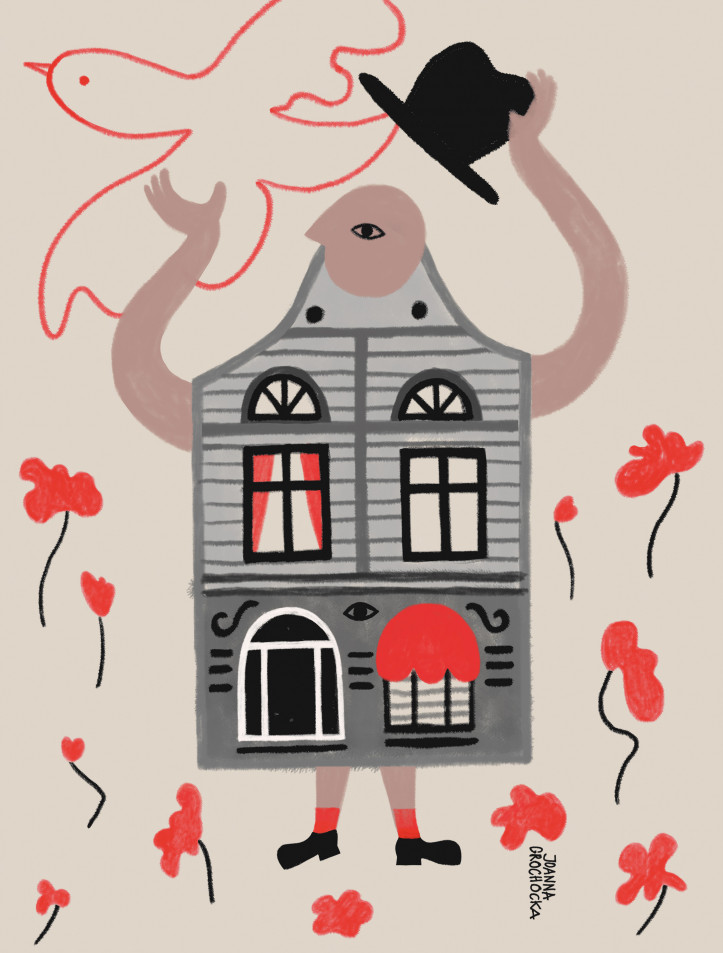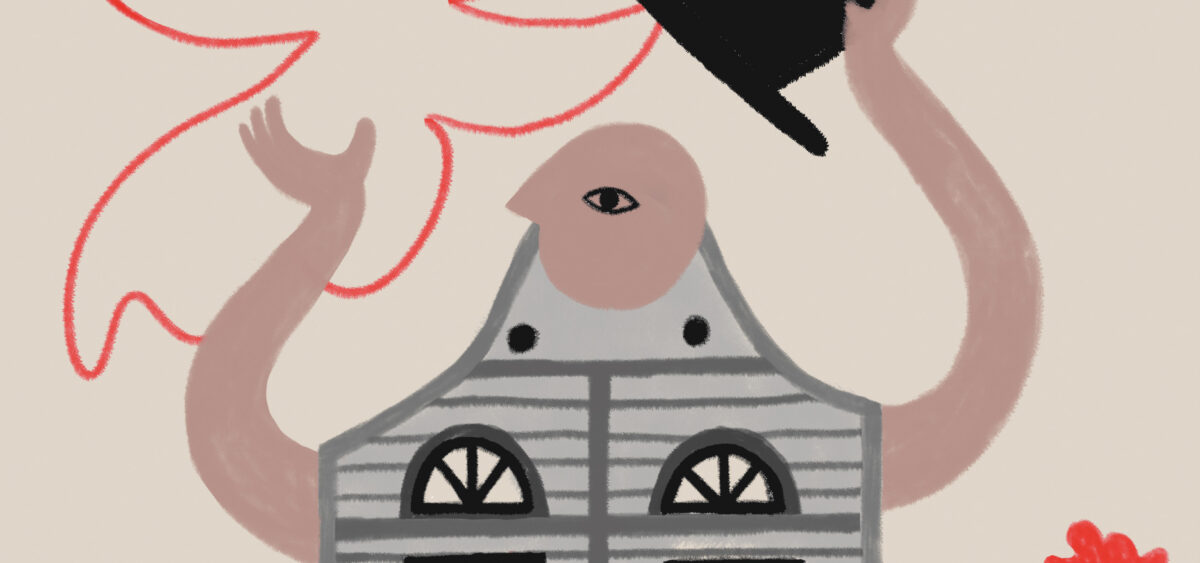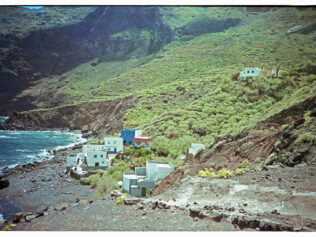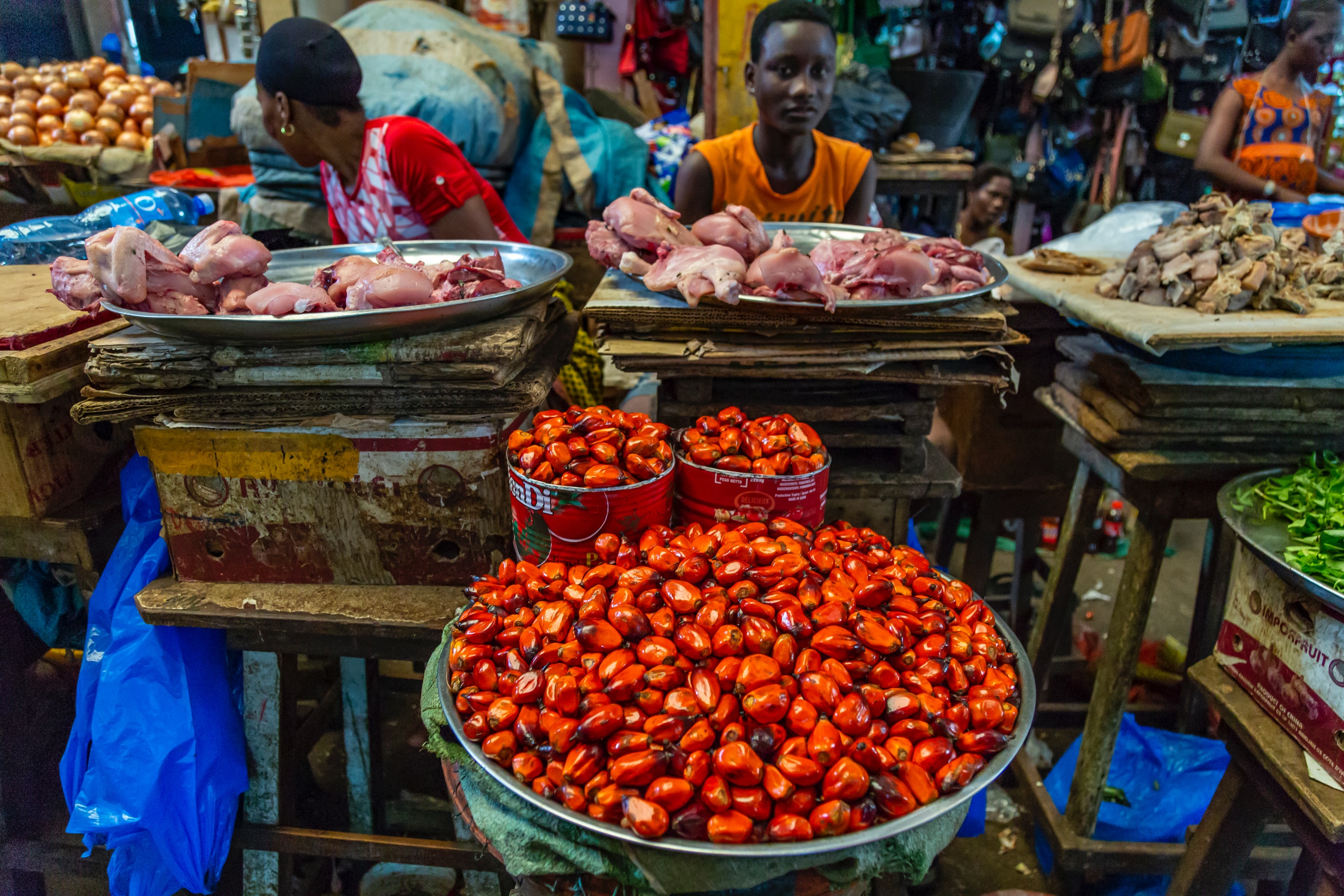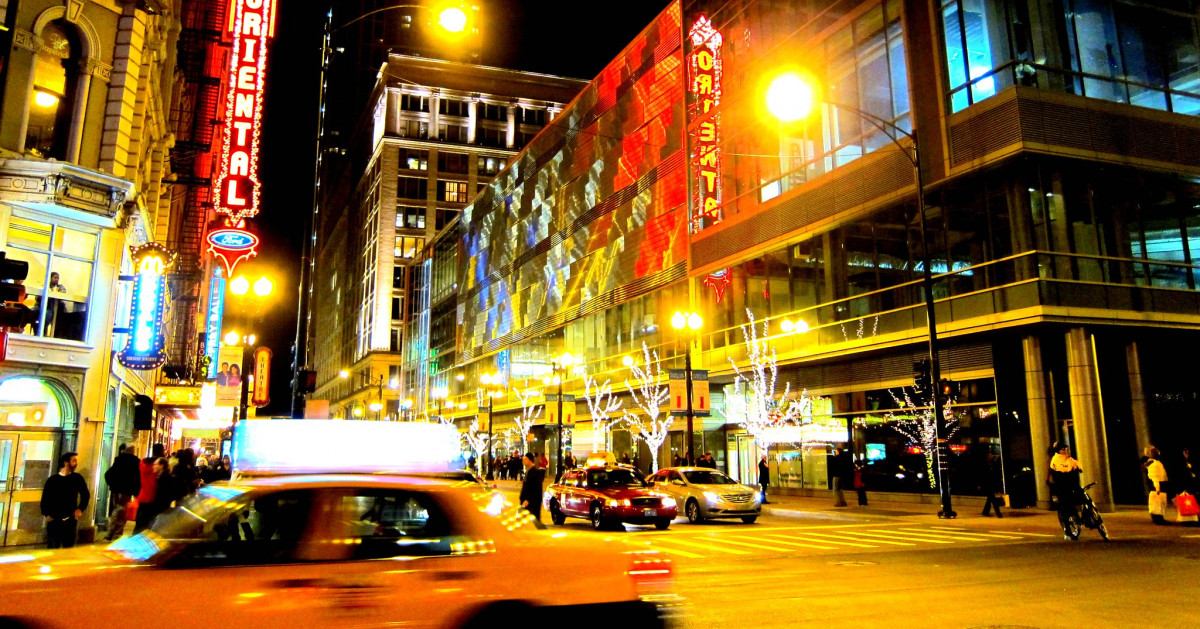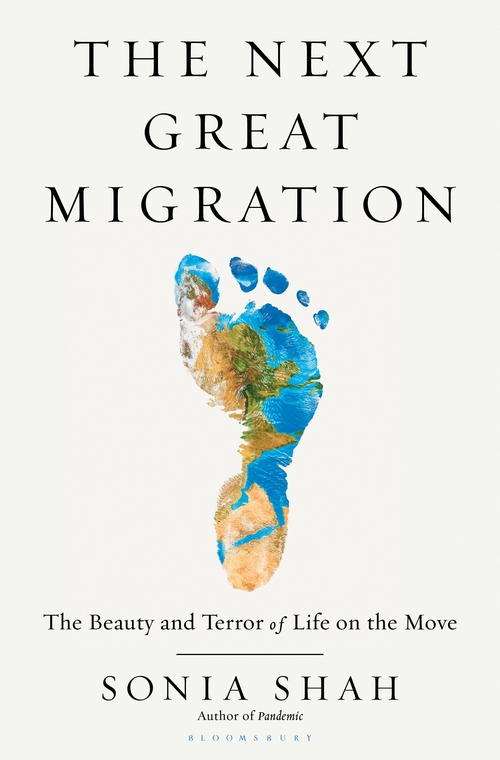
It might have no walls, yet buzzes with life. Or the other way round, protecting its lethargic innards with a solid exterior. How do the poorest of the poor live their lives? And how does one go through life without having a place to call one’s own?
He is tiny and naked, only learning to crawl. His hands pressed to the path, paved with brownish tiles. Right behind the two palms come shuffling his tiny knees and thighs, their skin the hue of dark honey. A flash of pale soles. A metal bracelet glistens in the sun, pushed on the boy’s ankle as the Hindu custom has it. Wobbly and unsure, the boy keeps getting closer to his destination several feet away: a crushed plastic bottle lying right there on the kerb. In a few moments, it will become a toy. The only entertainment available, the only object whatsoever the child can grab and push into his mouth. The boy sits. He’s trying to gnaw on the bottom of the bottle, but it’s too thick and won’t fit inside his tiny mouth, so he moves it, turning the new toy around, and swallows the narrow bottleneck instead. He chews on it a little with toothless gums, momentarily rapt with this new experience. Around him, unforgiving Mumbai roars on.
Over 20 million people live in this city, and everyone is responsible for their survival. Children are no exception. We have grown to believe that cities are friendlier and safer for human beings than the vast expanse of wild nature. But there are also metropolises like this one: predatory, always hungry, on a neverending hunt for resources, money, people. In such a crowd, no tragedy gets to grow big enough to make anyone care. There is too much suffering, too much poverty and anguish going around – and still, there is so much victory over the hopeless circumstances. People still manage to get by somehow, making the impossible happen day in, day out. They don’t despair, nor do they celebrate. Millions of catastrophes dangle right there above their heads, never falling on them. Perhaps this is why nobody seems surprised or distraught by the sight of a little boy chewing on a plastic bottle. I seem to be the only person looking at him at all.
The constant uproar of traffic and hot clouds of exhaust fumes, coughed up by old oil-fuelled engines, drown out even the loudest cries and pleas. The indifferently fast gait of chappal-clad feet is motivated by routine and experience. This massive urban body is a mega-home, not worried about the people it has already swallowed, keeping them inside its gut. It feeds them with leftovers and delusional dreams to which they cling much more than they should. The city throws some handouts to everyone, not unwilling to provide a shadow of a chance: hard labour for a handful of rupees; some glass and plastic found in the skip and good enough for resale; a portion of leftover rice from a restaurant; a banknote damp with sweat, pulled from some foreigner’s pocket with pleas, wordless yet relentless. A cupped palm suspended in the air, sometimes touching lips, a gesture understandable in every language on Earth. Have mercy. Help. Food. One can either help the beggar, look away, or respect the suffering and apologize by touching one’s forehead with an empty hand. Forgive me. I cannot help you. I see your pain.
This gesture makes it possible to keep going with one’s dignity intact and with the hope that the city will make up for our helplessness. Perhaps someone else will help the beggar; someone will grant him one more day of life. Maybe the saviour will pass by in just a moment.
The toddler never cries nor asks for anything; he feels no anxiety. This is where he lives. This pavement is his home, this non-place with no clear marker, no walls, no objects. The boy lives here today, right now. Maybe he’ll stay here for a few more days of his still-short existence. Or maybe both of them, the beggar and the toddler, are here to stay?
A few metres away lies his mother. The woman sleeps by the building wall, washed with monsoon downpours, pocked with the blood-red spit of men chewing on paan mixed with tobacco. She covers her face with the hem of her cheap nylon sari, the only way she can shield herself from the burning sun, the turbulent city, people’s eyes. How did she even manage to fall asleep here, right by a busy street, constantly dark with lines of noisy cars coughing up black fumes, wagons and carts heavy with burlap sacks, bamboo poles or garbage, pushed or pulled by men that always shout to one another? Here, surrounded by the cacophony of horns that comes from nimble scooters, motorcycles, and rickshaw drivers with their little trumpets? Here – meaning anywhere, wherever one alley meets another, wherever there is an empty patch of pavement. No walls, no bed, not a single object to call their own. The woman and the boy are here on their own, stuck in their limbo. They have nothing apart from each other and the place that will have them for now. Is that enough to call it home?
Attributes of permanence
Those who choose to put down roots somewhere start to accumulate various attributes of permanence. They pry a few paving slabs out of the path and arrange them to make a hearth. In the city, there are always some pieces of wood to find. There are old newspapers and bits of cardboard, coal can be bought at the market. Somehow, aluminium pots materialize. They can be used for boiling water, cooking rice, frying onion. There is no meal without onion. When inflation strikes, the prices of onions are the first to go up, and the poorest are the first to suffer. The increases are the only thing they don’t have to wait for; it’s the only priority queue they get to stand in.
Shapeless, colourful rags hang from a string; they hardly look like clothes. Someone managed to stretch a large tarpaulin sheet between a tree branch and the wall that runs along the pavement. There is a kitchen, a roof, a drying space. A municipal water pump doubling as a bathroom and laundry room is only 200 metres away – and perpetually occupied. In the morning, crowds of men wash with ritual solemnity. Mothers shower their children, who huddle under the cold stream. Girls fill buckets to carry back to their mothers – the water is useful for making tea, cooking, and spraying the road so that the dust doesn’t lift in clouds, irritating nostrils, getting in the eyes and hair. The pump is a place for socializing and conversation. It’s an information and advice centre for the dispersed nomads who no longer have their villages and markets. Not even a tree in whose shadow they could stand and foster a sense of community during their daily exchange of gossip and wisdom.
People sleep on the bare pavement, sometimes using a piece of cloth or straw mat as bedding. This is where they eat, rest, play with their children. This is the place of family quarrels and moments of tenderness. It’s the place where a torn sleeve can be stitched and where a tired body can rest after hours of exhausting and poorly-paid labour. As for the rest itself, it rarely lasts long enough. The sleep of the poor is a fragile thing: it comes late, when the city begins to quieten down; it ends early, long before the wake-up time of those who can afford goods and services as cheap as a cup of tea, a rickshaw ride, rock crushing.
Most passers-by see this place as their everyday limbo, nothing more than a corridor to move from one errand to another until, by the end of the day, they come back home. But to the city nomads, this is home, after all. It is home in a very literal sense, and often more permanent than they would like it to be. Not to mention it turns out to be more expensive than one might expect. To stay there on the street, they have to pay. Their rent is collected by policemen, neighbouring building owners, and thugs sent by the self-proclaimed boss of this particular street or district. No space is truly ownerless. Even street sweepers know precisely which gutters are theirs, and scavengers have divided skips and garbage sites into zones where they work undisturbed, searching for whatever they might exchange for money.
People have their animals. Goats stand, tied to poles. At night, dogs sleep curled on the banks of cool sand; during the day, they lie stretched in the middle of the pavement. They all look the same, as if from one litter. The only way to tell them apart is the placement of scars on the muzzle and the patterns of tears and notches on their ears. I have seen chicken coops and makeshift cow sheds right there, in the streets – livestock as confused and overwhelmed by the new circumstances as their owners. The sudden transplantation of their rural life into the urban tissue causes a defensive reaction: wrapping up in repetitive habits for as long as possible.
The invisible
Even in the street, people can still dream. Many of those dreams paint the same vision: social advancement to a more permanent location, a shelter to protect themselves from the brutality of the streets and the cruelties of the weather, from the winds and monsoon rains. Those who used to live in the narrow gap between two buildings have recently disappeared; they went off somewhere else. If lucky, they joined their relatives in some informal settlement that cannot be found on any map and still has no name more dignified than the slums. It’s also crowded and poor, but life there finds some shape and structure. The new home can be made out of wood, pieces of found boards and corrugated metal. And that’s that, ready to move in, hook up the electricity, set up a bed, a small table and a TV, ready to sit and surf the mobile internet. No slums are a no man’s land; there is always some dark boss and his thugs, sure to collect the rent and payments for everything and anything needed for survival. They give permits and withdraw them at will. They can give loans that require new loans to be paid back. The desire for a safe haven forces the poor to build a pyramid of fear. The closer they get to the feeling of being at home, the more expensive and dangerous it gets as the stakes grow. Brutal evictions for a single failed rent payment are not unheard of. Those who avoid eviction at the hands of a local gang still have to fear the authorities, showing up together with developers who plan an urgent investment right there, having chosen the area as a building site for their new middle-class housing estate. In the middle of the night, a bulldozer comes. The steel blade destroys rickety structures where children were playing moments ago, where meals were being cooked and dreams were being dreamt. Everything crumbles in a pile of rubble, strewn with helpless despair. Once again, street life it is.
Some people get lucky. They manage to escape the vicious circle and reach the world of brick houses inhabited by the entire family for so long that the time secures their rights by prescription. Such slums – older, better at proving their permanence, padded with services useful for the city and the rich – are harder to evict. Such areas, locked in their legal limbo – also known as favelas or pueblos jóvenes in other parts of the world – have their urbanist definition: we call them ‘precarious neighbourhoods’. All over the world, their population is growing. More and more people live in those illegal zones, with no access to city services and no supervision from the authorities. Those are the places where no buses go, where there are no doctors, no postmen, no teachers, no pensions. And so the number of invisible people keeps on growing. They don’t exist in statistics, they are invisible to the law and to other citizens. In two to three decades from now, those unwanted, uncounted arrivals will make up the majority in their cities. All prognoses point toward them.
While covered up with so much effort, homelessness caused by evicting people from their local communities and pushing them towards the urban void and anonymity is the new normal. Dubravka Ugrešić, forced to emigrate from her native Croatia after the fall of Yugoslavia, describes an upcoming new world full of nomads with the title of a former Czechoslovakian children’s programme: Nobody’s Home. The impossibility of being at home, of growing up in a family house, inheriting it from the older generations or settling in a new place all paint a picture of pauperization and migration on a global scale. It is not the dream of a better life but the survival instinct that makes people move most often and the furthest. A home once lost, writes Ugrešić in the essays from the times of her American exile, remains where we left it in our memories and is subject to immediate fictionalization. Frozen in the past and forever idealized, it has little to do with the former truth or the new trajectory of nomadic life. This mechanism works similarly in most cases, be it a European intellectual chased away from her homeland by persecutors or an Indian farmer trying to escape starvation. Since then, their lives are broken forever.
What is it that allows us to call a place home? What material shape and what emotional alchemy must meet to make it more than just a space for spending time and storing some objects? The answer depends on how dramatic one’s conditions are. The tiny Indian boy with a plastic bottle in his mouth was with his mother, in an essential relationship with the only person concerned with his existence, with the entire universe of needs and desires contained by the figure of a mother. The place was not important, which is why instinct stopped the child from leaving her side, making him crawl near the woman like a faithful satellite.
But what if there is no mother?
High and low
Instead of her, there was a television. An old model, with a large cathode-ray tube. The picture was fuzzy and shaky, but the box kept on booming, even though none of the girls were watching. They all stood in a row in front of their hut, lined from the youngest to the oldest, leaning on the wooden wall, full of cracks and crevices wide enough to peek inside. The day was hot and dry. The dust from the loose hills hung in the air, maybe carried there by the wind coming towards the Andes from the Pacific ocean, impossible to see from here despite the height. The owners of the most expensive neighbourhoods in Lima made sure to monopolize the Peruvian horizon. Now, their homes – spacious apartments stacked to make towers several floors high – are the only ones with a view of the peaceful waters, flushed with pink and orange hues come evening. From where we stand, the ocean and free space can only be seen with the mind’s eye. On the one side, the view is obstructed by mountaintops; after all, we stand on a steep slope, only 100 metres from the summit. The other side is busy with a panoramic view of the city, packed thick with small houses on the outskirts. Further out, near the city centre, there are high-rises, roads and squares, leaving no space for anything green. In the distance, the river flows in its bed, drying out slowly as the years go by. From up here, it looks like an old skin shed by a giant snake, wrinkly and burned to a crisp by the ruthless sun. At the other end of this enormous city, concrete and dirty beiges stretch to the hills. Antenna masts stick out from the mountaintops, connecting Lima with space and the satellites heavy with information, circling the Earth’s orbit. Never before could humanity determine the exact location of every citizen. We know where they are geographically, but how do we measure their sense of belonging, their feeling of being at home?
The girls look at me shyly, but encouraged by the neighbour, they start to tell their story. Their mother abandoned them a few years ago and left with a lover; they live here on their own. All they have is this. Each other. And one fluffy puppy. I peek inside. It’s a one-room house with no carpet on the concrete floor, a large wooden bed standing in the middle. The mattress is dirty, covered with a tangle of blankets and duvets. They sleep in there all together. The TV is on, proving they have electricity at home, but I see no light, not even a naked bulb. That’s all. No kitchen, no wardrobe. There is one shared laundry space outside and one shared outhouse, its walls made of corrugated steel. They have no running water; they carry it up the steep flights of stairs from a hydrant in the lower part of the neighbourhood. The stairs are painted blue. It’s the colour of a local political party, reminding the villagers who provided them with this improvement. Votes can earn access to the electrical grid, water pumps, even playing fields and squares. Those who live in the lower areas already have it all; they live in brick houses, too. But such a future takes a long time to climb up. The higher up the hill, the bigger the desperation. It’s where the latest newcomers have to make do, the persistent highlanders from the Andean villages. They take whatever they can get: the most inaccessible locations with no access to civilization, at the end of unhardened dirt roads. Rocks and pebbles roll underfoot. Huts built on sand.
It’s possible to live there partly due to legislation: according to local law, setting up a makeshift hut is enough to be granted the provisional right to occupy the land within 24 hours after moving in. That’s no small thing: the cornerstone of a future home, the certainty of one’s own address, encourage people to invest and add other signifiers of permanence around their new settlements. Those who came here 20 years ago have since managed to transform their makeshift shacks into wooden huts; now, they live in three-storey brick houses. Two or three generations live in one spot. Years on, the private buses that used to crawl up the dirt roads have been replaced with city transportation and asphalt streets, making way for dustbin lorries: final proof that the authorities have acknowledged the existence of this neighbourhood. More than that: they’ve committed to looking after it.
The four sisters know that such a future is still far away for their village – and perhaps beyond reach altogether. Their only caregiver is the neighbour who began to feed and dress the girls, inviting them to the tiny shop she runs not far from their hut. She has two small children, but lives in a two-room wooden house, freshly built on a proper wall base. The shop offers essential goods, such as eggs, lollipops, razor blades, notebooks, pencils for the local kids. The girls’ father drives a taxi he was given by a Christian charity organization, but he rarely shows up, hardly ever bringing any money.
Where can you go from such a home, from such an abandoned space with no light and no love? Will any of those girls ever go down to the city centre, see the old colonial haciendas, or the fashionable clubs and restaurants taking their place? Will their dust-covered feet ever walk the generously watered lawns surrounding the shopping mall, spectacularly inserted in the mountain slope right by the ocean in the Miraflores district? Perhaps one of them will visit the surrounding homes as a cleaning lady, or maybe she’ll look after one of the wealthy old people pushed in their wheelchairs along the promenade by their carers in white uniforms. The elderly gaze at the ocean, at the purebred dogs playing in their dog parks, at the kids doing tricks on their skateboards. Which of the distant barrios do their carers, dishwashers and cooks go back to? Do their homes have access to a sewage system, are there any buses going up there? How many stairs do they have to climb to reach a room that can so easily contain everything they own? Lima is an unfair city, literally turning its back to its injustices. It faces the ocean, where all the roads lead and all the investments trickle. It never looks back at the hills and their poverty. And yet, you can feel the pressure coming down from the steep slopes, the perpetual thrum of dreams and determination. More poor neighbourhoods are growing strong, morphing into production centres with GDP said to exceed those of some European countries. The people who started in meagre huts are now industry barons, yet they’re even quicker to forget the others they left far behind on the highway to a better life.
Patience and silence
In a city, even the cruellest and poorest, there isn’t much room for despair. Ambitions flock and swarm, one man pulling another one up in rivalry or forced by the circumstances. Fate rarely stands still, it gives in when pushed by expectations and effort for improvement. But deep inside inland Kenya, right by the national game reserve Maasai Mara, there stand four mud huts, sinking into themselves. Their windows are just holes made in clay, and there is another hole in the thatched roof. Until recently, that hole was the only escape for the pungent smoke rising from the hearth at the centre of the circular room. Inside, there are two pots, a spoon and a small oil lamp. Nothing else, nothing at all. The men are long gone, they left for the pastures with the cattle. They’ll be back when they’re back. The women stayed behind, minding some children that run about in too-large T-shirts they received from American charity shipments. A blind old woman grabs my hand and drags me inside. I need a moment to get used to the dark. I will never forget the sight of this dim emptiness. A house with no contents. What are walls devoid of presence? Can we still call it a home if there’s nothing inside? It has a roof, but it cannot protect the relationships within the family, there is nobody to whom it could offer some privacy and safety. There are walls, but all they do is separate those people from the miles of emptiness stretching outside. And the long-cold hearth, too. There is nothing to cook here. There is no food, no news of when it might arrive. Only a bare dirt floor, the waiting, the silence. Outside, there are solemn and unsmiling children who have long learned to expect nothing. They don’t plan on going anywhere.
Nomads
In the most extreme circumstances, a poor person’s home is their bare identity. They can carry it with them, wherever fate throws them. Or it can keep them rooted in place, even when moving would save them. Poverty can take conflicting paths: it forces some people to move, yet keeps others caged in one place. Still, it robs both groups of free choice. When thinking of home, we might associate it with something permanent given to us at birth. Yet it soon becomes the address of our aspirations, synonymous with change that brings a brighter future. We wish to relocate to a better place, even though the final destination is usually just the dream of reaching a place fit for inhabiting, nothing more. To the nomads described by Ugrešić, a home is a place suddenly swallowed by a void created by some dramatic event, their private earthquake. Those who have lost their home once will forever keep on wandering in the hope of finding it unchanged and knowing full well that it’s an impossible dream to hold on to.
At the same time, the nomad’s life teaches us to find home wherever we are – or maybe to carry it with us and recreate from scratch wherever we stop. Whether we want it or not, in these changing times when no street and no smartphone app stays the same for more than a fleeting moment, we are all becoming nomads.
